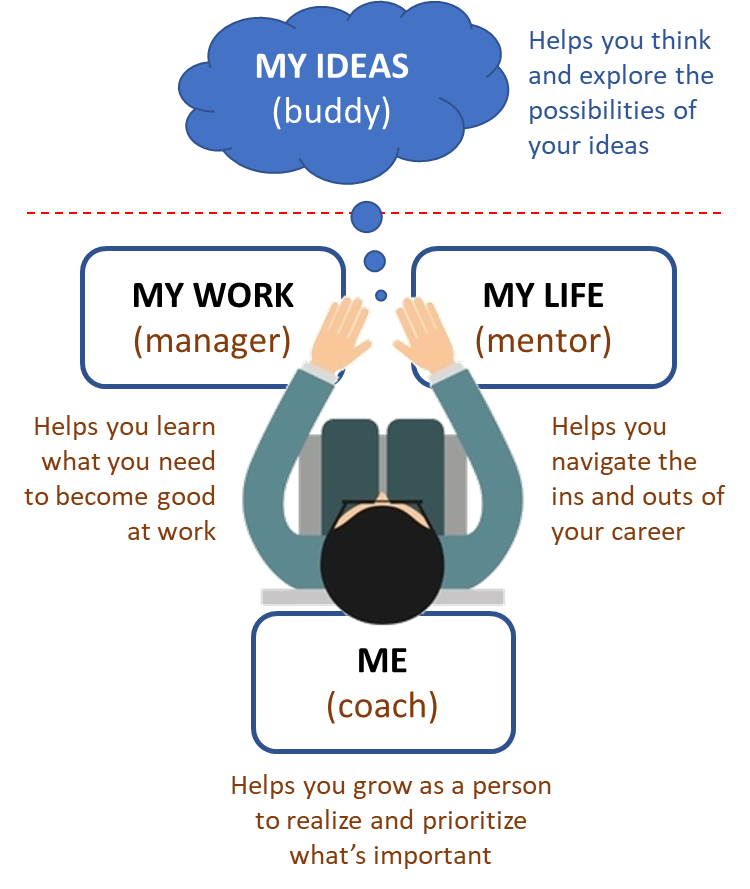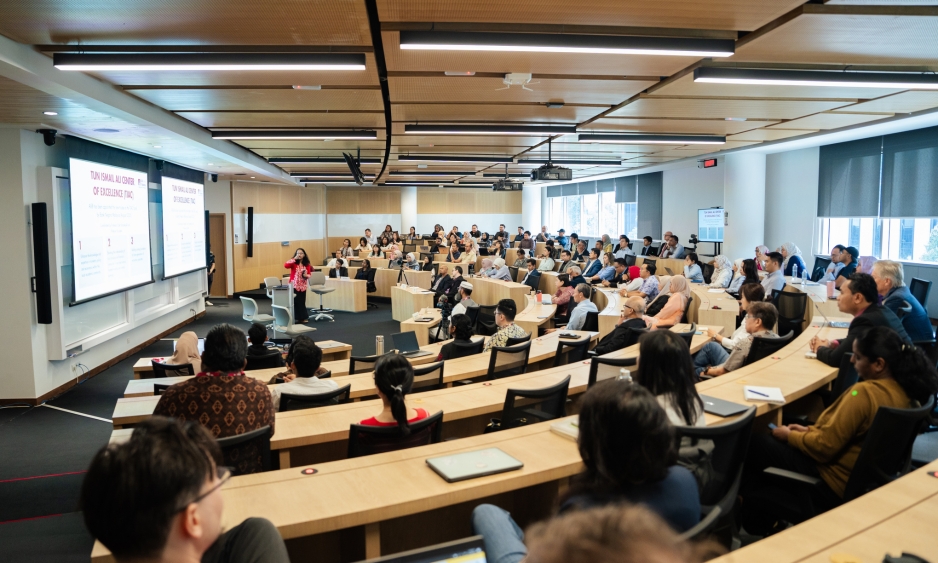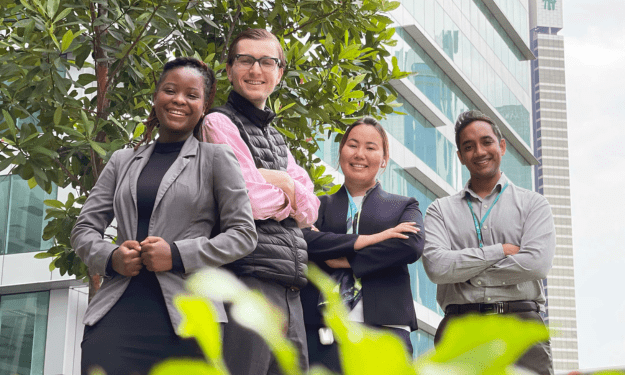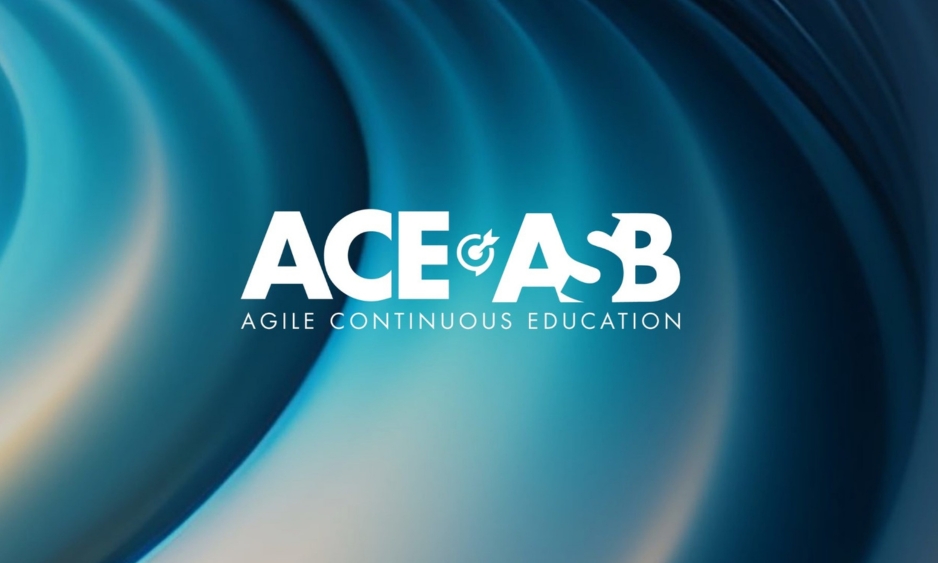What happened the last time you had a crazy idea? Who did you talk to? What did they say? Here are some possible responses depending on who you chose to share with.
You: “I have a crazy idea”
Team: “Why don’t YOU do it?”
Boss: “What is your implementation plan?”
Mentor: “Don’t repeat my mistakes.”
Coach: “How much have you been thinking about this?”
In my experience and research on innovation, I have come to realize that there is a missing link in making innovation happen. Organizations don’t capture innovation not because they lack creativity – people have crazy ideas all the time. They fail to capture innovation because there is no effective way for the ideas to be shared and grown. Most seeds of innovation died before they even had a chance to sprout.
As an example of a company that has figured out how to tap into the innovative potential of its people, there is a 900-employee Brazilian canmaker called Brasilata. It has been consistently voted one of the top innovative workplaces. Chip and Dan Heath, authors of Switch: How to Change Things When Change Is Hard, wrote about the amazing number of ideas that the company comes up with year after year. For example, in 2008, Brasilata employees submitted 134,846 ideas—an average of 145.2 ideas per person. By 2015, that number grew to more than 200,000!
So, how can you get started? Get yourself, and your employees, a think buddy.
From supporting people to supporting ideas
In the 20th Century, HR practices evolved many supporting systems for employees to excel. We invented the concept of Management to help delegate work and maximize on-the-job learning. Then, we realized that employment is a career not just a job, and so was born the practice of Mentorship to help people navigate the journey. During more recent decades we’ve witnessed the growth of Coaching to foster self-discovery and development, as human capital development moved from treating everyone as generic employees to unique individuals.
The hallmark of the 21st Century, a.k.a. the open source era, is the spurt of connectivity-enabled creativity and innovation. Thanks to this 24/7 connectivity, ordinary people have never been more empowered with opportunities and possibilities to innovate. The next great idea may be waiting to be churned right there on your office floor. As such, organizations will need another supporting system to help not with people development, but the growth and strengthening of their sprouting ideas.
Therefore, I am proposing an additional service for employees in the open source era: one called the Think buddy.
Fundamentally, all four supporting systems have different foci. Managers focus on the outcome of the work so that you become better at achieving goals. This is why “What is your implementation plan?” is the likely response from a boss when approached with a crazy idea. Mentors, on the other hand, focus on sharing wisdom and experiences so you don’t “repeat my mistakes”. Finally, the coaches’ role is to help you grow, so their focus is on you not your problem. One of the first questions I learned during my coaching training was to ask the coachee “how often have you been thinking about this problem?”.

A Think buddy is someone to help ideas grow
What about these think buddies? Where do they focus? Simple, they focus on the ideas. Not the tasks, not the jobs, not one’s career, not even on the person in front of them – these cognitive companions are only interested in talking about the ideas and the possibilities.
You: “I have a crazy idea”
Buddy: “Great. I love crazy ideas. Let’s hear it.”
While it might seem simple, establishing this idea-supporting system is harder than it sounds. Like being a skilled manager, mentor, or coach, learning to become an effective think buddy is a field of practice with its own principles, fundamentals, and skillsets.
For example, as a coach you are taught to always focus on the coachee; what to listen for and which questions to ask. The overall process of the conversation evolves around helping the person to discover themselves. Particularly, you are not to provide answers or get absorbed into the issues at hand. Your job is to make them think not to worry about the thought itself. If you want to become a certified coach, then you need to demonstrate an understanding and the ability to practice these traits.
On the other hand, as a think buddy, you must train your brain to focus exclusively on the ideas. How do you make them grow? How to check for possibilities? How to switch perspectives? How to validate and re-validate the assumptions? What about the desired outcome? Or even when to stop the thinking, etc. More importantly, you must also learn to separate the person from the ideas; to not let human biases distract the growth. And the list goes on. Through the lens of neuroscience, wearing the hat of a think buddy requires a completely new type of wiring for your brain. The good news is, with practice and mindful attention, you CAN re-wire your brain.
And, like its other three supporting siblings, the effectiveness of think buddies can be measured. For examples, 1) How often do conversations with think buddies happen? 2) After the session does the thinker feel that their ideas were multiplied as opposed to diminished? 3) Do they feel personally threatened at any point in the exchange? 4) How much have the ideas moved forward towards plausibility? And 5) How likely are the employees to come back to the buddy when their next crazy ideas hit them?
What must organizations do to foster and maximize their capture rate of innovation?
Your employees need someone to help with their thinking, i.e. a think buddy
Unfortunately, my empirical research found that people in most organizations do not readily have access to such support system. Many have difficulties just naming who they go to when they have ideas. Some said they have tried sharing with their boss, their mentor, and even their coach, but none of those helped. “The ideas kind of died in the conversation”, one told me. Sadly, your employees will eventually stop acknowledging these creative thoughts altogether, and along with it the organization’s prospect for innovation.
How do you know whether these think buddies exist in your organization? Well to start, let your employees answer these yes/no questions.
- I have a person at work whom I immediately access to share my crazy ideas, yes or no?
- Working in this organization, my ideas often grow and expand into experiments, yes or no?
- I feel excited every day to think of something new, yes or no?
If their answers are towards ‘Nos’, then I suggest you start exploring now to set up the think buddies!

Dr Thun Thamrongnawasawat (Tan) is one of the foremost experts on dissecting complex management and business models and cascading them for easy implementation by companies across different industries. His innovative B.A.S.E. model has inspired numerous organizations to transform. He’s the author of the Brain-BASEd Leadership book series (2013-2016), a bestselling The Leadership Journey (2018) and a regular newspaper columnist. In 2015, Dr Thun was the recipient of World HRD Congress’s “Global Coaching Leadership Award” and named “Consultant of the Year” by the Ministry of Industry, Thailand.
He can be contacted at thun@asb.edu.my.
If you are interested to know more about our exciting Executive Education program click here.





